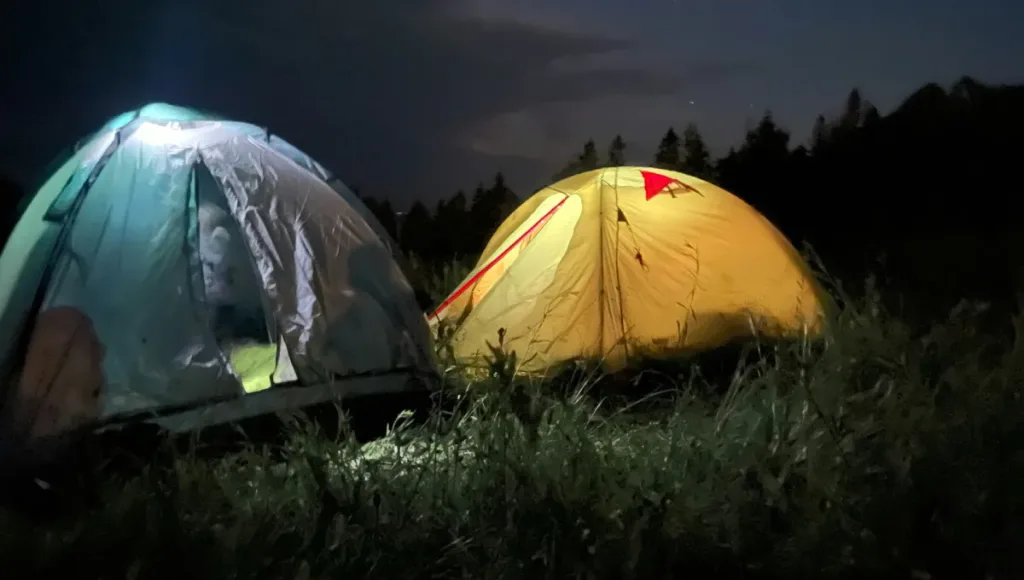A Tramper’s Cold-Weather Guide from New Zealand

How Long Do Camping Lanterns Last on a Full Charge? If you’re flying into Queenstown with a pack on your back, that question matters more than which pass you’ll cross tomorrow. After fifteen seasons guiding trampers from Fiordland to the Richmond Ranges, I’ve seen the same story: factory run-time claims meet South Island cold and shrink—fast. Below is the no-BS math, the myths, and the hut-tested tricks that’ll keep your lantern glowing when the sandflies come out for breakfast.
1.The Simple Kiwi Formula for Real Run-Time
FactoManufacturers quote How Long Do Camping Lanterns Last on a Full Charge? at 25 °C, constant beam, fresh cell. In New Zealand huts we run colder, dimmer, and often off-grid. Multiply the printed hours by three de-rating factors:
• Cold factor: 0 °C slices 30 % off lithium-ion capacity.
• Intermittent factor: you rarely run high all night—add 20 % back.
• Age factor: after three months of cycles, drop another 10 %.
Real hours ≈ stated hours × 0.7 × 1.2 × 0.9
Then convert to DOC bunk nights:
Nights = Real hours ÷ 2.5 h (average high-beam use per hut evening).
Example
A lantern advertised at 6 h high becomes 6 × 0.75 ≈ 4.5 real hours. Divide by 2.5 h per night and you get 1.8 nights—call it two full evenings before you need a top-up.
2. Trip Length Cheat-Sheet
2–3 nights (Routeburn/Greenstone)
Reverse the formula: look for a lantern whose stated high is at least 5 h. That gives the two nights plus one midnight dash to the long-drop.
4–5 nights (Heaphy, Abel Tasman)
Plan one mid-trip charge—either solar in a clearing or the 12 V socket at Heaphy Hut. Dial brightness to 50 % and the same cell doubles its effective hours. A 10 000 mAh power bank adds another 50 % reserve.
7+ nights (Stewart Island circuit)
Budget 1.5 h high + 1 h red per night. Even a lantern rated 4 h high will stretch to four nights; the rest comes from DOC hut plugs or swapping in a spare cell.
3. Cold-Weather Hacks to Stretch Every Charge
Pocket warm-up: ten minutes inside your sleeping bag lifts cell voltage 3–5 %.
Red mode: sorting gear at 5 lm red saves 60 % juice.
Dim-to-task: dropping output 25 % adds roughly 40 % run-time.
One-cable rule: a short USB-C splitter lets one power bank feed lantern, phone and inReach.
Spare cell: one 18650 or three AAAs weighs less than a muesli bar yet equals another 10 000 mAh brick.
4. Myths I Hear on the Track
Myth 1: “More milliamp-hours always mean more nights.” Efficiency varies 30 % between circuits; same 2 600 mAh can equal half a night difference.
Myth 2: “Solar will top me up in a day.” Beech canopy lets through <10 % sunlight; a 10 W panel often harvests only 600 mAh before dusk.
Myth 3: “Crank it on high to warm the tent.” LEDs add bugger-all heat but drain the cell flat. Drop lumens, add layers.
5. Quick Reference Card (screenshot it)
Stated high run-time × 0.75 ÷ 2.5 h nightly use = nights you can sleep easy.
If the maths feels shaky, pack one spare cell or a lipstick-sized power bank—lighter than an extra chocolate block and twice as comforting when the southerly howls.

-980x980.jpg)